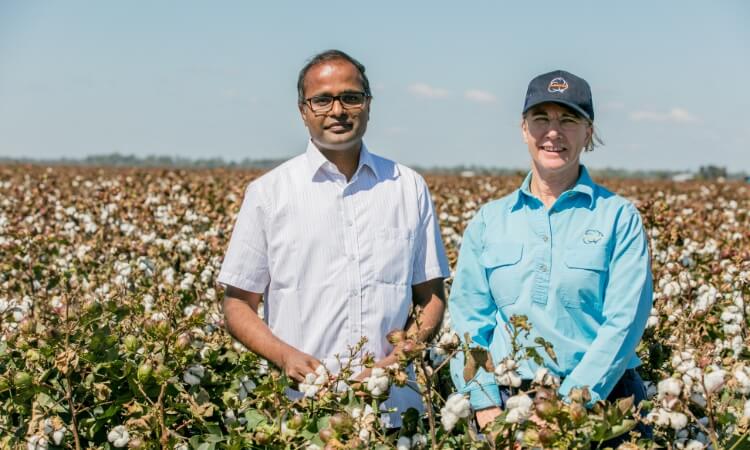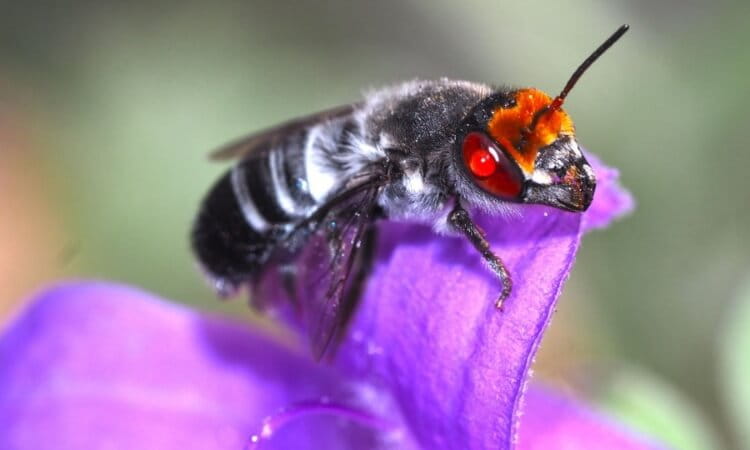Landmark approach to cotton disease research

A $13 million landmark partnership between the Cotton Research and Development Corporation (CRDC), the University of Southern Queensland (UniSQ) and the QLD Department of Agriculture and Fisheries (DAF) will help safeguard Australian cotton growers against the rising threat of disease and mitigate the economic impacts.
With disease already having a significant impact on Australian cotton growers, and climate change threatening to increase the spread, CRDC is making its largest ever single investment in a first-of-its-kind collaborative approach to cotton disease research: the Australian Cotton Disease Collaboration (ACDC).
“Disease is a critical challenge for Australia’s cotton industry - contributing to significant yield losses which undermine long-term confidence in growing cotton. In extreme cases, disease pressure is forcing some growers to opt out of cotton production,” said CRDC Innovation Broker, Elsie Hudson.
“Recent research commissioned by CRDC has found that across the cotton industry, disease is causing an 8 per cent reduction in yield. For growers directly affected by disease, they are seeing an average reduction in yield of 12 per cent. In some extreme cases, it can be as high as 100 per cent: their entire crop is at risk.
“While CRDC has invested in cotton disease research over several decades, the impact disease is having on growers’ profitability and productivity is increasing. A new approach is needed to overcome this persistent, leading limitation in the cotton production system.”
ACDC changes the game for growers, delivering a comprehensive coordinated national disease program that will help understand the impact of disease, enhance foundational pathology resources and capability, and deliver tactical management and innovative technical solutions. CRDC’s goal is to reduce the economic impact of current and emerging diseases of cotton to less than five per cent of the cost of production – down from 14 per cent – by 2028 through practice change and research, development and extension (RD&E).
The first initiative announced under CRDC’s new five-year strategic RD&E Plan, Clever Cotton, ACDC embodies the industry’s bold, ambitious new approach to solving industry-defining challenges: a shift away from smaller projects to bigger investments with bigger outcomes and bigger impact.
Today’s announcement of strategic partners UniSQ and DAF – taking place as the biennial Australian Cotton Conference today gets underway on the Gold Coast – brings the delivery of ACDC a step closer.
Deputy Vice-Chancellor (Research and Innovation) Professor John Bell said UniSQ was proud to lead the strategic alliance to combat cotton diseases from its Toowoomba campus.
“Through cutting-edge research and collaborative efforts, we are paving the way for effective cotton disease management strategies that will enhance industry resilience and sustainability,” Professor Bell said.
“The initiative exemplifies our dedication to translating research into actionable solutions that will empower cotton growers and strengthen the future of Australian agriculture.”
ACDC and UniSQ have announced the appointment of inaugural Director, Associate Professor Sambasivam Periyannan, a plant pathologist at UniSQ, with expertise in crop-pathogen interactions.
Associate Professor Periyannan said UniSQ was uniquely positioned to lead the ACDC.
“UniSQ is a renowned agricultural, research-intensive university, strategically located in Toowoomba on Queensland’s Darling Downs – a prime cotton-growing region.
“This collaboration will enhance UniSQ's research capabilities and bring significant benefits to CRDC, training next-generation researchers and consultants for the cotton industry.
“As a nationwide collaborative project, ACDC brings multiple experts from various agencies together to tackle disease in cotton. Importantly, this project will look to extend beyond national borders, and collaborate with cotton researchers from leading cotton-producing countries overseas, namely, USA, India, China, Brazil, and Pakistan.
“Through knowledge and material sharing, this global network will ensure the Australian cotton industry's preparedness and contribution to the global cotton industry's resilience against outbreaks of new strains of cotton pathogens.”
DAF’s Agri-Science Queensland Executive Director Dr Wayne Hall said DAF continues to invest in cotton disease research to protect the future of the cotton industry and this collaborative approach will amplify this effort.
“This initiative demonstrates DAF’s commitment to collaboration and to providing cotton growers with tactical management strategies to enhance disease resilience and sustainability,” Dr Hall said.


